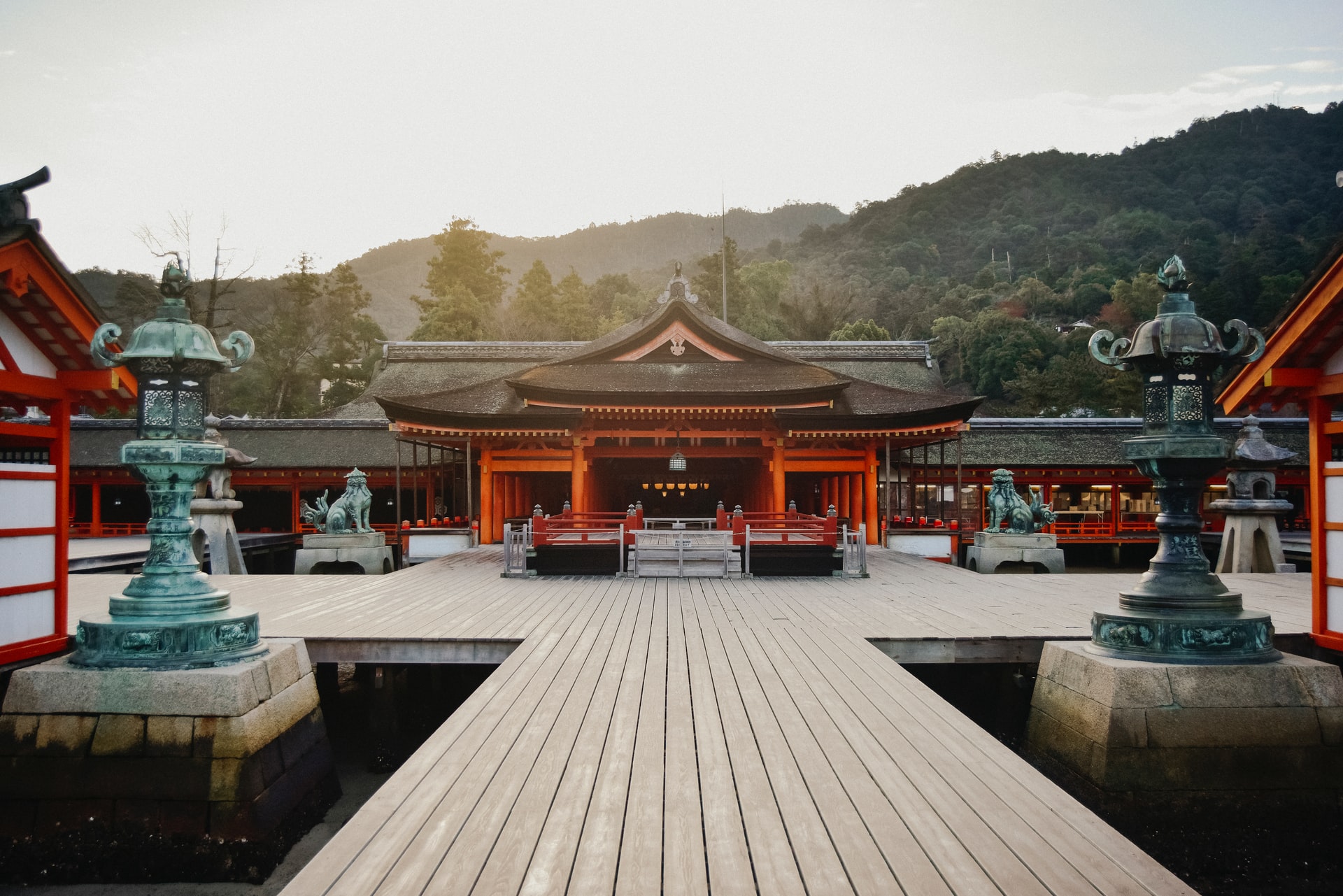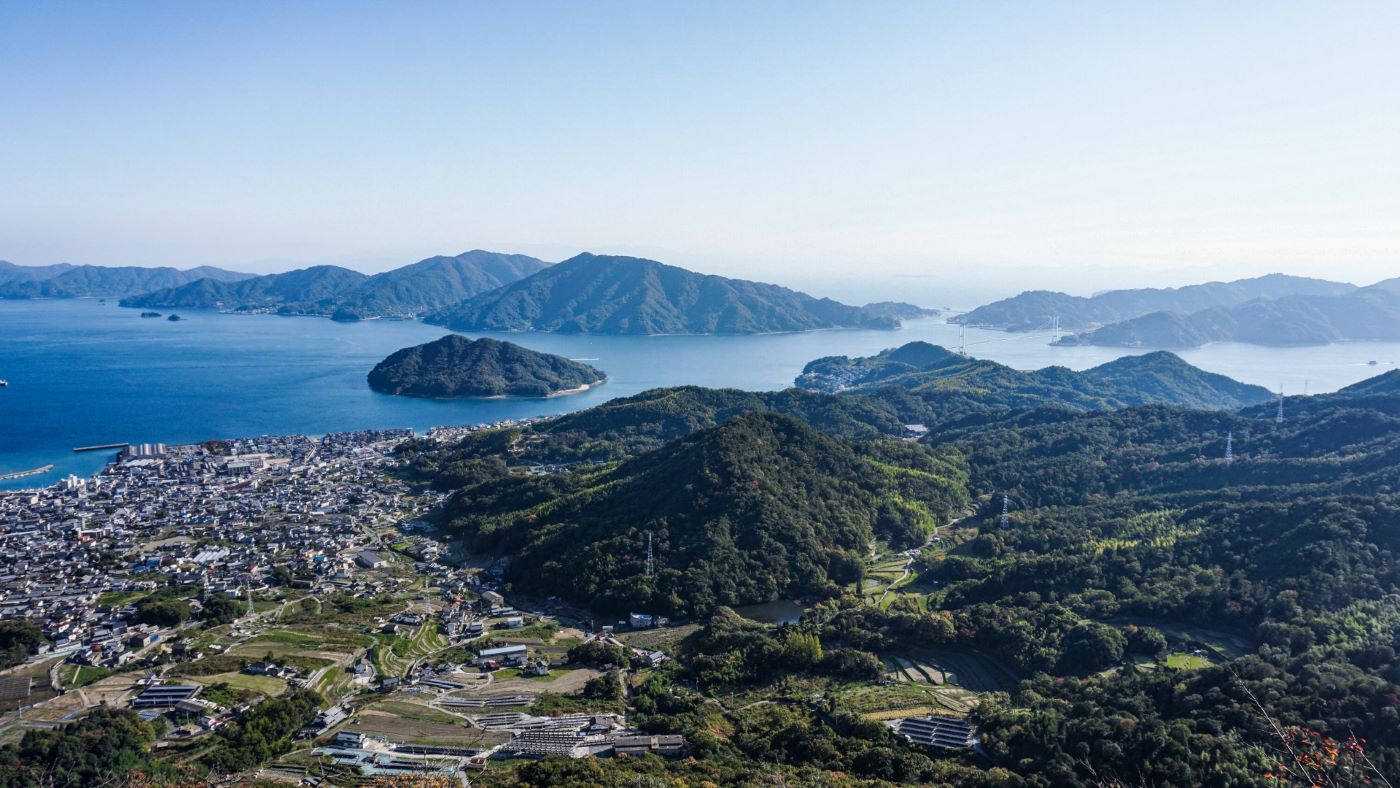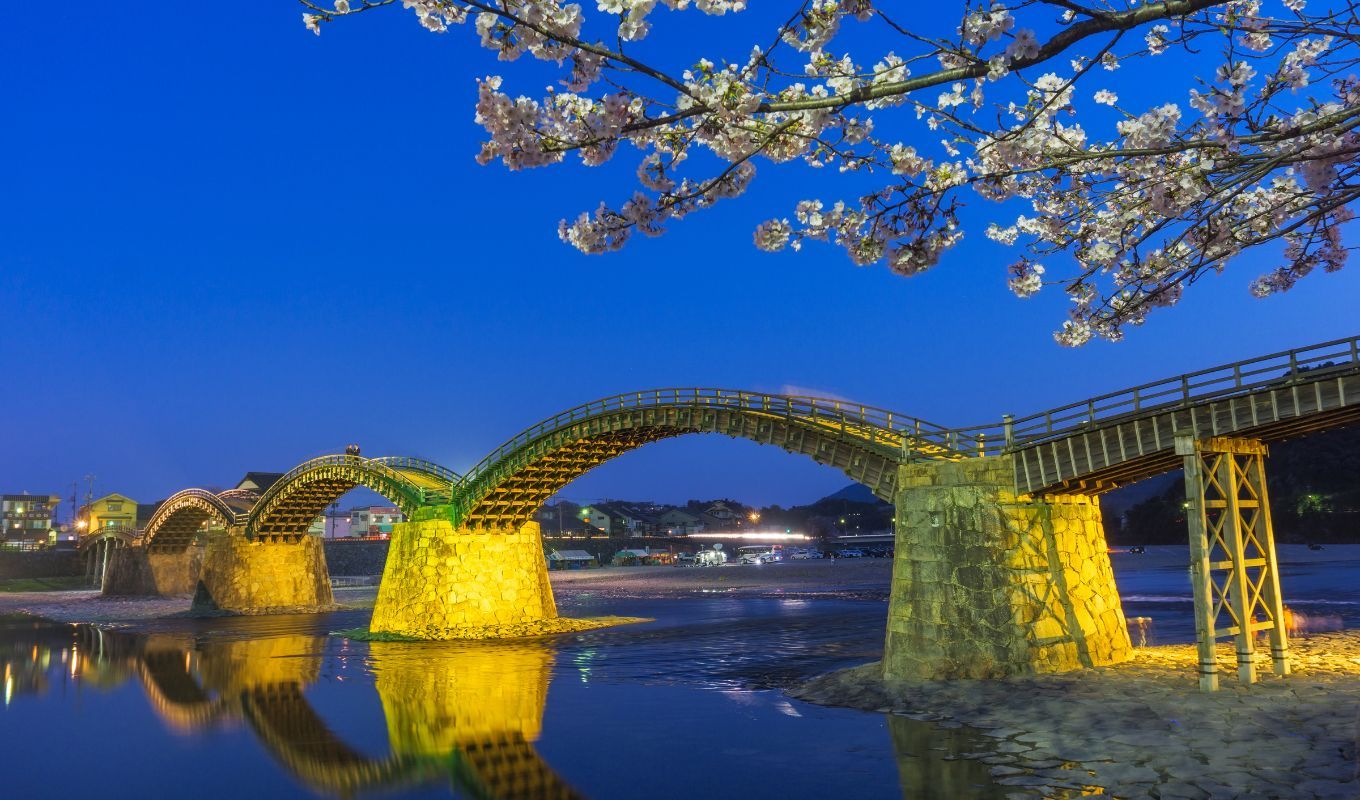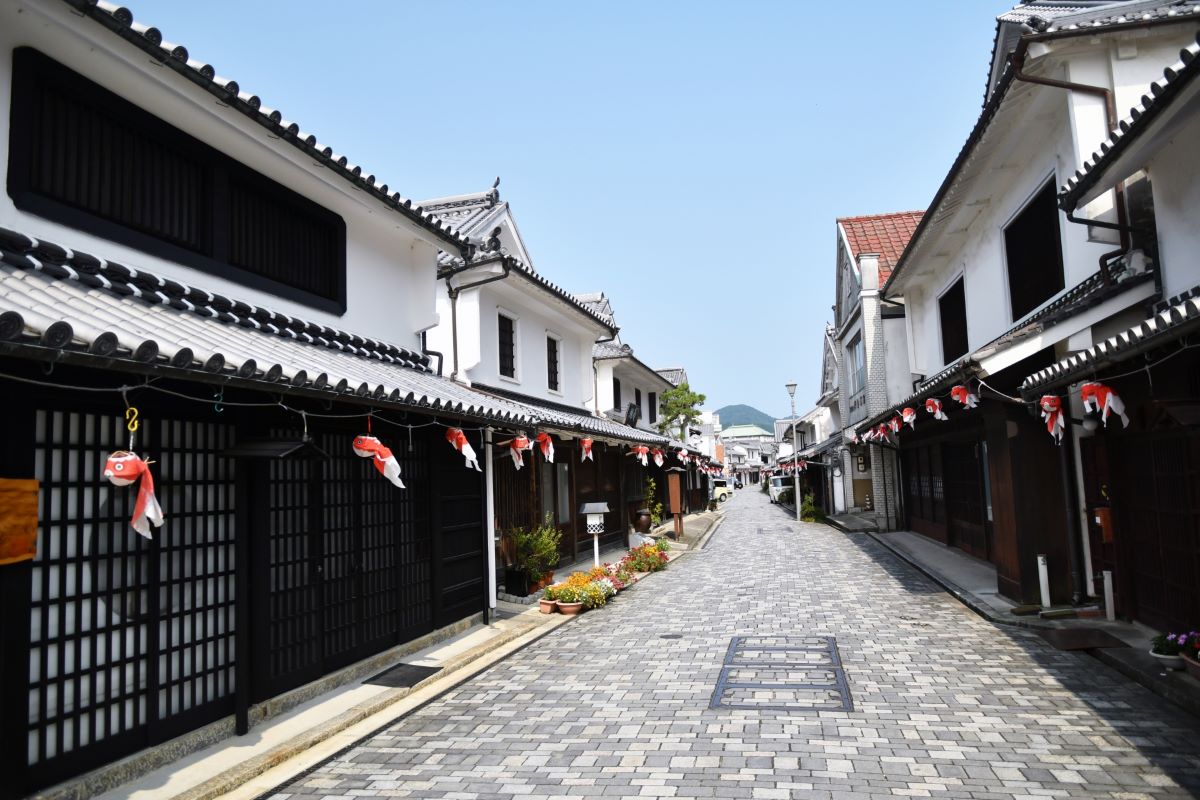If you stand on the roof of Hiroshima’s high building, no matter which way you look you’ll see mountains. In the south, you can see Miyajima and Etajima, famous for mikan tangerines, among many mountainous islands.
The three cities defining Hiroshima Bay – Iwakuni, Hiroshima, and Kure – form a long and shallow north-south triangle easily seen on any map. If you were to travel by hydrofoil from Hiroshima port to the island of Shikoku, for example, 10 minutes into the trip you’d be at Kure harbor.
Hiroshima City

Giving messages of the holiness of peace and recovery to the people in the world The town destroyed by dropping the first A-bomb in human history, gives hope and courage to the people in the world. This city has recovered into a beautiful peaceful/cultural city.
It is said that visitors from around the world are surprised that this city has many greens and streetcar idyllically runs. Places where people recognize the importance of peace, such as the World Heritage A-bomb Dome or World Peace Memorial Shrine rebuilt by the good faith of people in the world are scattered in the city.
We recommend you to visit the Hiroshima Castle and Shukkeien Garden associated with castle towns. Also, you can enjoy the art spots such as Hiroshima Prefectural Museum.
Miyajima

Majestic shrine pavilions surrounded by primeval forests Dark green Mt. Misen. Vermilion painted Itsukushima Shrine including its precincts on the sea. You must catch your breath at the sight of an impressive appearance.
Itsukushima Shrine has various scenes depending on the come and go of the tide. The shrine pavilions in “Shinden Zukuri” style seem to float on the sea when the tide rises. You can walk to the vermilion painted big shrine gate when the tide goes out.
Mt. Misen spread behind the Itsukushima Shrine is known as a famous mountain of mountain worship. Temples such as the Sacred Fire Hall in which “Fully-uncomprehending fire” is enshrined, are scattered in the mountain. Primeval forests of Mt. Misen have been also registered as World Heritage along with Itsukushima Shrine.
Saijo (Sake City)

One of three famous distilleries in Japan (the others are Nada and Fushimi). Saijo is called Sake city of western land because it is blessed with delicious water and brewer’s rice. Bisho pot as Touji-style dishes and sake festival are very popular.
Some brewers provide valuable mother water to the people on the Sake Chai Street. Let’s walk on the street of sake chai with decorative “Namako-walls” and the towns in the Edo period, drinking/comparing the famous water.
Recently the Bisho pot cooked by Touji men who work in the sake chai becomes popular. This pot is a special pot to use sake instead of water. At the Sake Festival in October, many seats are prepared for people to have these dishes.
Kure

Once-flourishing port town as a strategic point of Seto Inland Sea Shimokamagari, known as a port for the Korean embassy in the Edo period. This city has lots of remnants of the navy that have constructed the Battleship Yamato and you can explore the history and culture of the sea.
Shimokamagari island is a port that the Korean embassy visited several times in the Edo period. This city has the facilities such as Shotoen Garden associated with the Korean embassy’s visit. Also, Kure is known as a base of navy as a homeport for the Battleship Yamato. The marine museum of historic science “Yamato Museum” will be established in the spring of 2005.
We recommend you to visit this museum including the Mt. Irifune Museum which has lots of remnants of the Meiji period. You can have a glorious view of the Seto Inland Sea from Mt. Noro.
Iwakuni

This city has the beautiful Kintaikyo bridge, which was rebuilt in the Heisei period. This bridge has been making the shadows of five arches in the pure river, Nishiki River since 330 years before in the Edo period.
One of the most famous bridges in Japan, Kintaikyo bridge Iwakuni flourished as a castle town of Kikkawa in the Edo period. Kintaikyo bridge which is a symbol of the town was built by Hiroyoshi Kikkawa, the 3rd clan lord. It was a beautiful wooden arch bridge.

This bridge was changed for the 4th bridge in 2004. You can go to Shiroyama where the Iwakuni castle is located by ropeway gondola, and see a panoramic view of the castle town. Also, you should go to the Kikkoh Park where the house of clan lord existed and the white snake was designated as a protected species.
Yanai City

A town with prosperous houses of merchant families in the Edo period and white walls The houses of merchant families with white walls continue on the street in the town, where Doppo Kunikida had lived A center of Iwakuni clan’s economy Yanai city has flourished as a strategic spot of marine traffic since Muromachi period.
Also, this city has flourished as a mercantile city called the “Accounting and Purchase Department (Onando) in the Iwakuni clan” in the Edo period. In the section to preserve the important and traditional Japanese houses, the merchant families with white walls were built on the blocks in the Muromachi period.
Doppo Kunikida lived in the above section. There is the Doppo Kunikida Museum and House.
